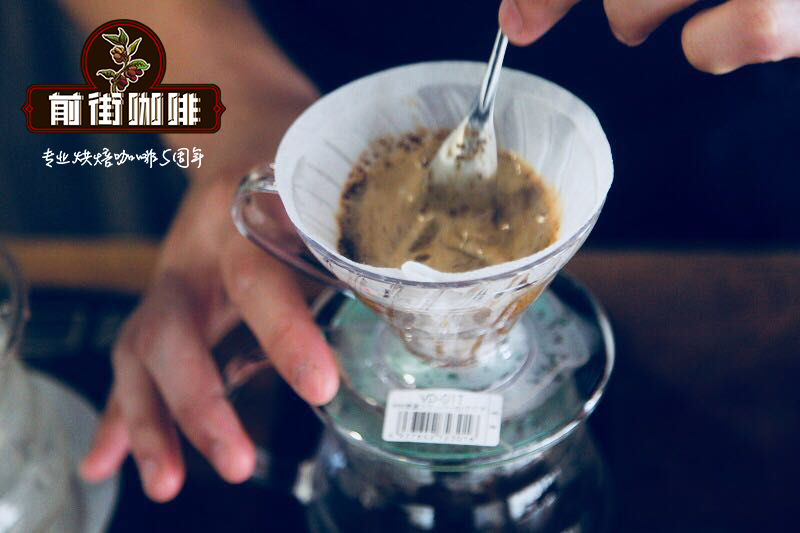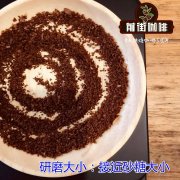The adjustment of hand steaming, what do you need to pay attention to?

Professional coffee knowledge exchange more coffee bean information please follow the coffee workshop (Wechat official account cafe_style)
In the process of learning hand flushing, in addition to knowing the conventional circular water injection method and water cut-off method, the term most often asked is "steaming" and put forward various strange statements. I think it is necessary to write an explanation about it to explain one or two.
First of all, we all know that coffee beans will continue to emit carbon dioxide and volatile aromatic substances after roasting. Whether coffee beans are used for semantic expression or hand flushing today, carbon dioxide must be fully emitted so as to avoid being hindered by exhaust in the extraction process. The former extraction is incomplete (insufficient extraction). In order to allow subsequent hot water to extract soluble substances from coffee smoothly, steaming is very important!
Use a small amount of hot water to trigger the emission of carbon dioxide from the ground coffee particles as quickly as possible, so that the hot water can smoothly enter the gap between the coffee particles, take out all kinds of soluble substances, and dissolve and hydrolyze.
For hand punching, without the help of 9 bar atmospheric pressure of Italian coffee machine, steaming is particularly important to help you get a better extraction ratio in the front stage of extraction.
Some people asked, if I am not stuffy and steaming, can I make the extraction return to the normal proportion for a longer time, theoretically, but also prolong the brewing time, enhance the concentration of the coffee and dissolve more chlorogenic acid, quinic acid and other substances, causing the coffee to become sharp and astringent.
So what do you need to pay attention to in steaming?
The first is "water". Today, we apply a small amount of hot water to discharge carbon dioxide, so the amount of water can be controlled to 2 times the weight of coffee powder. For example, 20 grams of coffee powder, we can use 20-40 grams of water to do steaming.
Then there is the "time", which depends on the depth of roasting and the length of storage of coffee beans. Generally speaking, the roasting degree of coffee that is often used to make coffee by hand is what consumers call shallow roasting, which is about 75 to 60 of the Eagram Agtron index. When carbon dioxide emissions are more stable, it is about a week after baking. The longer you put it, the more carbon dioxide will escape, and after about the fourth week, carbon dioxide emissions will become thinner. When students and consumers use coffee beans within 2 to 4 weeks, the steaming time is about 20 to 30 seconds after water injection, and then they can continue to inject water to complete the brewing process.
But what if you encounter coffee beans that have been stored for a long time?
Under normal circumstances, fresh coffee particles will cause the coffee powder bed to rise up into a hill because of exhaust. If it is stored for a long time, it will rise slightly or not at all. At this time, it should be noted that your steaming time should not be too long. The steaming time should be halved. If you steam in accordance with the time of 20 to 30 seconds, it will make the coffee powder bed glue and condense. As a result, the second water injection can not be extracted smoothly or even because the water can not pass through the powder bed, the water flow directly through the filter paper, the astringent taste of coffee products becomes very obvious, and the concentration is low, the taste will become light and sour.
I hope that through this article, we can understand the necessity of hand steaming and adjust the steaming time according to the storage time of coffee. I wish you all can enjoy a cup of delicious hand-brewed coffee every day.
Important Notice :
前街咖啡 FrontStreet Coffee has moved to new addredd:
FrontStreet Coffee Address: 315,Donghua East Road,GuangZhou
Tel:020 38364473
- Prev

Introduction to Ethiopian coffee producing areas? But the introduction of Bena forest sun beans?
Professional coffee knowledge exchange more coffee bean information please pay attention to coffee workshop (Wechat official account cafe_style) Ethiopia is the country where coffee was first discovered. It is still the most important producing country and the best in terms of coffee quality and output. Most coffee is the traditional Arabica species, with an annual output of about 350000 tons and more than 70% exported to countries around the world.
- Next

What is the effect of the thickness of hand-brewed coffee powder on coffee extraction?
The coffee grinding thickness is closely related to the final taste of coffee. A professional barista must know the effect of coffee powder grinding thickness on coffee extraction before making coffee, and reasonably control the coffee product quality by adjusting the coffee grinding thickness. The shorter the brewing time of the machine you use, the more the coffee powder has to expand its surface area to come into contact with water.
Related
- Beginners will see the "Coffee pull flower" guide!
- What is the difference between ice blog purified milk and ordinary milk coffee?
- Why is the Philippines the largest producer of crops in Liberia?
- For coffee extraction, should the fine powder be retained?
- How does extracted espresso fill pressed powder? How much strength does it take to press the powder?
- How to make jasmine cold extract coffee? Is the jasmine + latte good?
- Will this little toy really make the coffee taste better? How does Lily Drip affect coffee extraction?
- Will the action of slapping the filter cup also affect coffee extraction?
- What's the difference between powder-to-water ratio and powder-to-liquid ratio?
- What is the Ethiopian local species? What does it have to do with Heirloom native species?

